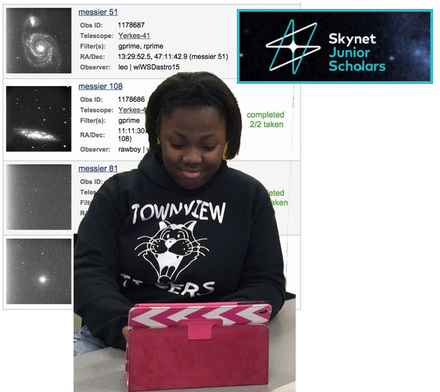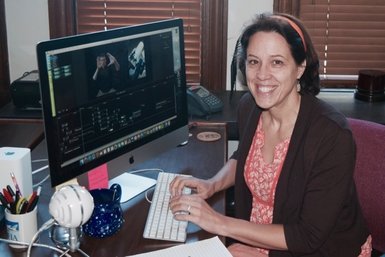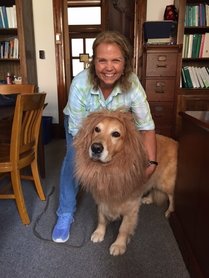Innovators Developing Accessible Tools for Astronomy
IDATA is a three year project funded by the National Science Foundation that will engage a group high school age students, their teachers, professional astronomers, software engineers, and design experts in the user-centered design process of data analysis software for astronomy. READ MORE . . .
Our Video
Our Video
From Skynet Junior Scholars to IDATA
|
Yerkes Observatory and its partner organizations have been caring about accessible astronomy for many years. IDATA grew out of one of those efforts, Skynet Junior Scholars (SJS). The aim of the SJS project was to build the online lessons and hands-on activities that students need to learn about astronomy, request images from one of the Skynet telescopes, and answer their own questions about the universe. Although SJS created many ways for students with blindness and low vision to participate, we wanted to do more. We believe that everyone should have the opportunity to analyze their data from the stars independent of help from a fully sighted individual. That means that our online software, Afterglow, needs to be transformed from a tool that works only with images to one that does much more. After all, the pretty pictures we love so much start as numbers on a spreadsheet. That format gives us the power to manipulate and present the information anyway we can imagine. IDATA participants will do the imagining in a software design process that puts the user at the center of the action. Along the way, they will learn a lot about astronomy and the computer programming that is vital to astronomy.
|
It's a BIG Goal With BIG Team to HELP
|
Skynet Programmers and Astronomers - We can't do astronomy without a great network of telescopes and the people who make them run. This team also will take the design ideas from IDATA participants and code them into the new Afterglow Access software
Quorum Programming Experts - Quorum is a computer language that has been developed on purpose to be easy to use by everyone with special consideration to blind and low vision programmers. The University of Las Vegas Quorum Team will consider possible design choices that include accessing data and telescopes using code. Teachers of the Blind and Visually Impaired (BVI) - This team from the Wisconsin Center for the Blind and Visually Impaired are working with the Yerkes Education Team to make sure that we never underestimate what can be done with BVI student leaders, and to consider all the new technology options that are available Research Team - We want to do much more than create great software and expanded opportunities. We want to contribute to changing the way people think about computing science, software design, and the ability of people with varied interests, abilities, and backgrounds to be part of these exciting fields. The Research team from TERC and Logos are the scientists on the project who will study what happens in these areas (and more) when students are part of the design team. Associated Universites Inc - This special collaboration is being knit together and advised by specialists in Science, Technology,Engeneering and Mathematics(STEM) education at Associated University. They are bringing together the resources and advisors we will need to stay on track and make everything we do from good to great. |
The Yerkes Observatory Education and Design Team

Brittnay Struble
You could say that Brittnay has been working at Yerkes all her life. Her father is buildings and grounds supervisor, so she grew up only feet away from the back door of the observatory. As a kid, she admits she found all the griffins on the building creepy but now, Brittnay is our go-to person for everything related to the Skynet image request system. Brittnay is also the person who makes sure that everyone has a fun and safe experience at the observatory. She is working with architects for the University of Chicago and observatory staff to be sure that this 120 year old building is ready for everyone, even those who will be here with service dogs. Her "Moaning Myrtle" costume for the Magic of Astronomy star party gets better every year.
You could say that Brittnay has been working at Yerkes all her life. Her father is buildings and grounds supervisor, so she grew up only feet away from the back door of the observatory. As a kid, she admits she found all the griffins on the building creepy but now, Brittnay is our go-to person for everything related to the Skynet image request system. Brittnay is also the person who makes sure that everyone has a fun and safe experience at the observatory. She is working with architects for the University of Chicago and observatory staff to be sure that this 120 year old building is ready for everyone, even those who will be here with service dogs. Her "Moaning Myrtle" costume for the Magic of Astronomy star party gets better every year.

Dr Al Harper
Dr. Harper is a faculty member at the University of Chicago and Director of Yerkes Observatory. He enjoys working with students who come to the observatory. Dr. Harper has worked with infrared astronomy for many years as the lead scientist for the development of an instrument to detect and measure infrared light which is invisible to the human eye.

Tyler Linder
As an astronomer, Tyler has frequently used the Skynet telescopes to locate and research near-Earth asteroids. Even though he lives so far away in southern Illinois, Tyler is going to be the project scientist with the education team while we design the first generation of experiences for IDATA students.
As an astronomer, Tyler has frequently used the Skynet telescopes to locate and research near-Earth asteroids. Even though he lives so far away in southern Illinois, Tyler is going to be the project scientist with the education team while we design the first generation of experiences for IDATA students.
|
IDATA is looking for two groups of educators to participate in IDATA. Ten teachers from within 75-miles of Yerkes will be chosen to work directly with the designers and software engineers in the development of Afterglow Access while an additional ten teachers from throughout the US, who have previous experience in astronomy and astronomy research, will participate remotely. For more information, click the "Getting Involved," link on this page.
|






